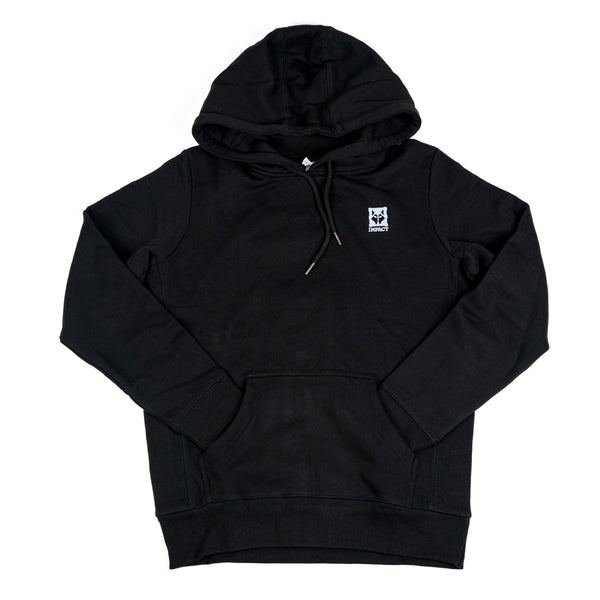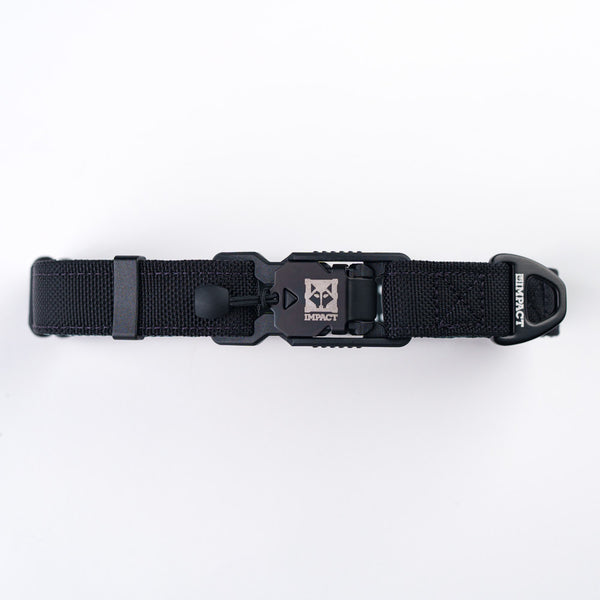Determining the appropriate dog crate size is crucial for your dog’s wellbeing. In our dog crate sizing guide, you’ll learn how to measure your dog, factor in their growth, and choose a dog crate that promotes comfort and positive crate training outcomes. Learn why pet parents are trusting Impact Dog Crates to provide dogs with the highest quality crate possible.
Key Takeaways
- The correct dog crate size is crucial for a dog’s safety, comfort, and successful crate training, and can help prevent destructive behaviors.
- To ensure a proper fit, dog owners should measure their dog’s height and length and consider their breed’s average size and potential growth when selecting a crate.
- There are various types of dog crates such as wire, soft-sided, and furniture-style, and each has its specific advantages and considerations for comfort, durability, and integration into home life. A durable aluminum dog crate will provide a combination of pet safety and pet comfort.
Why Dog Crate Size Matters
Imagine a space where your dog feels secure, comfortable, and calm. That’s the magic of choosing the right dog crate size. It’s not just about the dimensions; it’s a matter of your dog’s safety and well-being. A crate that’s too small is a cramped cell, while too much space can leave your pet feeling exposed and anxious.
It’s the Goldilocks principle in action – the size crate must be just right to foster security, aid in successful crate training, and minimize the risk of destructive behaviors.

Comfort and Security
Within the confines of the right crate, a Parson Russell Terrier, like any other dog, finds a personal haven, a safe space to retreat when the world becomes too much. It’s a place where they can unwind without feeling the walls closing in or the vastness of an oversized space overwhelming them.
With the perfect dog’s crate, your dog’s safety and comfort are assured, providing a secure area that supports their well-being and peace of mind.
Crate Training Success
Crate training is a dance of patience and consistency, and the right dog crate size is the music that sets the tempo. When the crate size is attuned to your dog’s size, it becomes a personal space where they feel in control and at ease, paving the way for a smoother training process.
As you gradually increase the time your dog spends in their wire crate, you minimize the chances of developing anxiety or fear, key elements for a harmonious training experience.
Preventing Destructive Behaviors
The right crate size acts as a guardian against chaos. It’s a space clearly defined for rest, not for relieving themselves or for gnawing out of boredom. By matching the crate size with your dog’s size, you create an environment that naturally discourages accidents and reinforces house training.
Moreover, a well-fitted crate limits the available extra space, reducing the likelihood of your pooch developing anxiety-driven destructive behaviors.
Measuring Your Dog for the Ideal Crate Size
Before you can find the perfect crate for your dog, you need to play the role of a tailor. Measuring your dog is not just about ensuring they fit; it’s about crafting a space that adheres to their form and function. It’s a simple process: measure your dog for both height and length, then add a few inches to each dimension for comfort and safety.
This ensures enough room for your dog to stand, turn, and stretch out without feeling cramped or lost in an oversized space.
Measuring Height
To capture your dog’s height, have them sit or stand tall, and measure from the floor to the highest point of their head or ears. It’s essential to add a couple more inches to this measurement. Why? To give your dog that extra space to sit up without grazing their head against the crate’s top – crucial for both their comfort and dog’s safety.
Measuring Length
Length is just as critical as height when it comes to crate comfort. Measure from the tip of your dog’s nose to the base of their tail. Once you have this number, tack on an extra few inches. This gives your pooch enough room to stretch out fully, ensuring their comfort and dog’s safety within the confines of their new home,.
Factoring in Growth and Breed Size
When your pup is still growing, or if you’re parenting a large breed, a crate with a divider is your best bet. It’s a cost-effective choice that grows with your puppy and aids in potty training. Wire dog crates often come equipped with these dividers, making them adaptable as your dog grows or even if you have multiple dogs.
Always consider the average size of your dog’s breed, such as a Great Dane or a Golden Retriever, and any gender or mixed ancestry that might affect their adult size.
Why Choose Impact Dog Crates
At Impact Dog Crates, we take pride in offering crates that are not only built to last but also designed with your pet's safety and comfort as our top priority. Our crates are crafted from high-quality, American-made materials, ensuring they are robust enough to handle everything from everyday use to the demands of travel. We understand that safety is crucial, which is why our crates feature smooth edges, secure door latches, and optimal ventilation to keep your pet safe at all times, whether at home or on the go.
Recognizing that every dog is unique, we offer a range of customizable options to perfectly suit your dog’s specific needs. From choosing the size and color to selecting the door configuration and collapsibility for easy storage, you can tailor your crate to match your pet’s personality and lifestyle. Trusted by veterinarians for our safety features and stress-reducing design, our crates can help alleviate anxiety during travel and transitions, promoting your dog's overall health and well-being.
Our crates are designed to blend seamlessly into modern homes with their sleek, professional finish, ensuring they don't look out of place. They are also incredibly easy to maintain, featuring materials that resist rust and corrosion and are simple to clean, helping you keep a hygienic environment for your pet. At Impact Dog Crates, we are committed to providing exceptional customer service to help you get the most out of your crate experience, ensuring that choosing an Impact Dog Crate is the best investment you can make for your dog’s safety, comfort, and happiness.
Each of our dog crates offer a dog crate sizing guide algorithm that will help you find the perfect crate size for your dog. Shop our three best selling dog crates:
Crate Training Tips for a Positive Experience
Embarking on crate training is like starting a new chapter with your dog. It’s a journey that should be filled with positive experiences and milestones. Position the crate in a family area to encourage exploration, use treats and toys to make it inviting, and never force your dog to enter.
These steps will help foster a sense of calm and safety, making the crate a place of happiness rather than confinement.
Positive Reinforcement
Positive reinforcement is the secret sauce to successful crate training. It’s about rewarding your dog’s curiosity and bravery as they explore their new crate. A treat here, a favorite toy there, and a heap of praise can make the crate the best spot in the house.
Through positive association, you can alleviate crate anxiety and set your dog up for a lifetime of comfort in their special nook.
Consistency and Patience
Like any good habit, crate training thrives on consistency and patience. Dogs may not take to the crate immediately, displaying signs of distress or resistance. It’s important to be patient and maintain a consistent routine, letting your dog adjust at their own pace.
A regular schedule that includes exercise, training, and relaxation can significantly reduce your dog’s anxiety and prevent those unwanted behaviors within the crate.
Creating a Comfortable Environment
Transforming a crate into a sanctuary requires making it as comfortable as possible. Whether it’s a soft bed for snoozing or some treats and toys for entertainment, these touches can make a world of difference. Some tips for creating a comfortable crate include:
- Adding a soft bed or blanket for your pet to sleep on
- Providing treats and toys to keep them entertained
- Using a crate cover to create a den-like atmosphere for wire crates
- Taking advantage of the cozy vibe of a plastic crate
By following these tips, you can ensure that your pet’s crate is a comfortable and inviting space for them.
It’s all about encouraging your dog to see their crate as a safe and inviting space.
Addressing Destructive Crate Behaviors
Destructive behaviors in a crate – from chewing on bars to digging or vocalizing distress – are a sign that something’s amiss. It’s crucial to get to the root of these behaviors, whether it’s anxiety, poor crate training, or simply boredom.
Recognizing these signs is the first step in creating a more harmonious crate environment for your dog.
Identifying the Cause
Understanding the cause of destructive behaviors is like solving a puzzle. Is it separation anxiety? Inadequate crate training? Or maybe a teething puppy seeking relief? Each behavior, whether it’s scratching, barking, or accidents, can point to different triggers. Traumatic past experiences or misunderstandings about what the crate is for can also contribute to these behaviors.
Observing your dog when they’re alone can provide valuable clues to what’s really going on.
Implementing Solutions
Once the underlying issues are identified, addressing them with the right solutions becomes your new mission. Reintroducing the crate in a positive light, seeking advice from a behaviorist, and offering engaging chew toys can turn the tide. These strategies can redirect your dog’s energy and soothe their mind.
Gradually increasing the crate time and responding calmly to their reactions teaches them that serenity is the key to freedom.
Frequently Asked Questions About Dog Crate Sizes
What size should my dog's crate be?
Your dog's crate should be large enough for them to stand up, turn around, and lie down comfortably. It's essential to measure your dog from the tip of their nose to the base of their tail and from the top of their head to the ground while standing to ensure you choose a crate that gives them adequate space.
Is it better for a dog crate to be too big or too small?
A crate that is too big can make a dog feel insecure and may lead to accidents since dogs often avoid soiling their sleeping area. Conversely, a crate that is too small can be uncomfortable and restrictive, potentially causing anxiety and discomfort. Ideally, the crate should be just large enough for your dog to comfortably move as described.
Do dogs need to stand up in a crate?
Yes, dogs should be able to stand up in their crate without their head touching the top. This is important not only for their physical comfort but also to ensure they can naturally change positions and stretch, which is vital for their well-being.
How much room does a dog need in a crate?
A dog needs enough room in the crate to lie down, turn around, and stand up without difficulty. Typically, adding 2 to 4 inches to your dog's standing height and length when measuring for a crate will provide them with sufficient space to be comfortable without making the crate too large.







